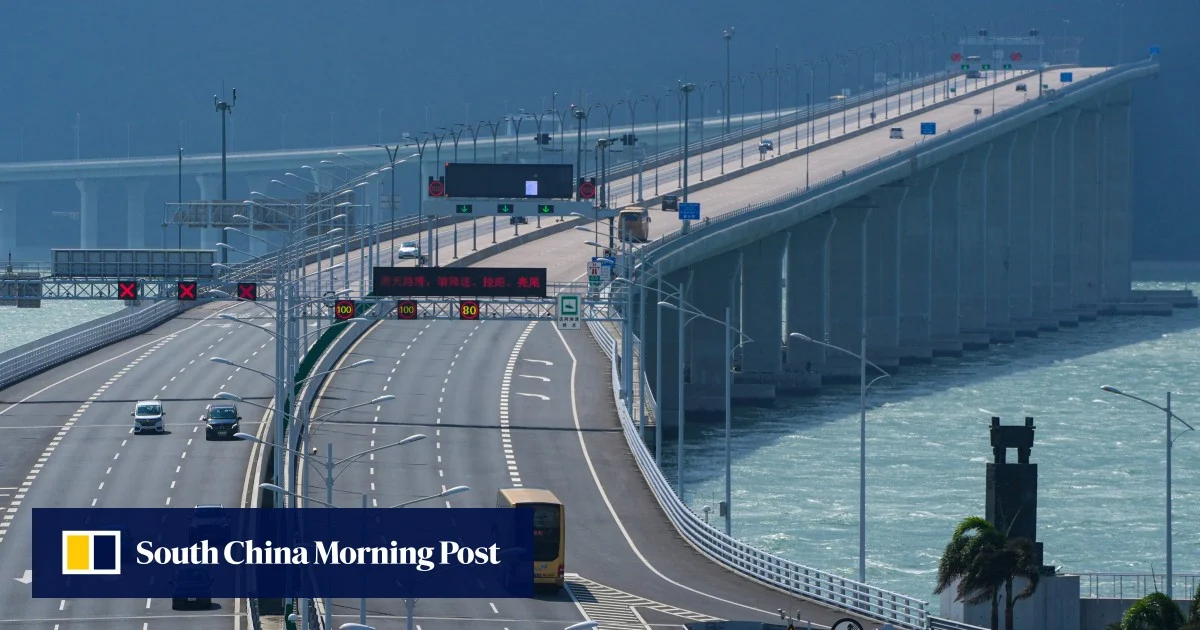Published on
August 15, 2025
China and Hong Kong are enhancing their collaboration to strengthen the tourism and commercial landscapes of the Greater Bay Area. This partnership aims to unite the unique cultural, commercial, and tourism assets of both regions, creating a more integrated and appealing destination for international visitors. By focusing on cross-border cooperation in areas like tourism promotion, cultural exchange, and smart commerce, the initiative seeks to foster economic growth and elevate the GBA as a leading global tourism and business hub.
The commercial districts of Hong Kong, Macao, and Shenzhen in Guangdong province are transitioning from rivalry to cooperation, signaling a crucial turning point in the growth of the Guangdong-Hong Kong-Macao Greater Bay Area (GBA) as a premier global tourism hub.
Experts see this shift as a chance to creatively combine the distinct features of each city, resulting in more digitally advanced business districts and a stronger, unified partnership between the major commercial streets of the region. The primary objective is to elevate the Greater Bay Area’s status as a top global tourism destination.
One significant step in this collaboration occurred on August 8 when Shenzhen’s Dongmen Chamber of Commerce and Macao’s Industry and Commerce Federation signed an agreement to foster cooperation. The focus of this partnership is the collaboration between two renowned heritage shopping streets: Shenzhen’s Dongmen Old Street and Macao’s Rua do Cunha.
Dongmen, situated in the Luohu district of Shenzhen, stands as one of the city’s most historic and expansive commercial hubs. It has witnessed Shenzhen’s transformation from a fishing village to a modern metropolis. On the other hand, Rua do Cunha, a pedestrian-only street in Macao, is famous for its blend of Chinese and Portuguese cultural influences, offering a variety of shops and restaurants.
The agreement between the two regions establishes a communication framework aimed at promoting tourism, fostering cultural innovation, developing brands, supporting youth entrepreneurship, and advancing smart commerce.
This effort builds upon a previous agreement signed last July between Dongmen and Temple Street in Hong Kong. Since then, the collaboration has led to joint food festivals, group tours, sports events, and even a livestreaming program that brings together young people from Hong Kong, Macao, and Taiwan.
In September, the three streets will further their partnership by organizing a Mid-Autumn Festival celebration featuring food and cultural events. Events will occur simultaneously across Shenzhen, Hong Kong, and Macao, allowing visitors to experience the diverse cultures and traditions of each region. During the National Day Golden Week, special travel itineraries will be offered, enabling tourists to visit all three locations and immerse themselves in their unique offerings.
The Dongmen Chamber of Commerce emphasizes that these collaborations allow for the sharing of resources and the diversification of products among commercial streets. By organizing large-scale events, these collaborations boost consumption and tourism. The well-connected transportation network across the Greater Bay Area, along with the supportive policies in Luohu district, creates an ideal environment for these cross-border initiatives to thrive.
This growing cooperation not only enriches the visitor experience but also stimulates consumption in various sectors such as retail, hospitality, and dining. The collaboration also helps attract international tourists, making the GBA a more attractive and competitive tourism destination.
The idea behind this new model is the recognition that individual growth is no longer sufficient to support the expansion of commercial streets. By joining forces, the cities are mutually supporting each other. Unlike traditional government-driven projects, this new approach focuses on cooperation between commercial districts, with the government providing essential support behind the scenes.
This collaboration is considered a breakthrough in how business districts work together. By leveraging their unique characteristics, the three cities are creating a foundation for growth and success. The regions also have greater flexibility to respond to market demands and operational challenges, which allows them to adapt quickly and efficiently.
The collaboration, described as a “two-way pursuit,” aims not only to exchange goods, people, and services but also to maintain the distinct cultural and commercial identities of each region. The upcoming 15th National Games, jointly hosted by Guangdong, Hong Kong, and Macao in November, will offer an excellent opportunity to further promote these exchanges.
To enhance the effectiveness of their cooperation, the partners plan to introduce brand crossover pop-up stores, youth maker markets, and a culinary festival that will bring chefs from all three cities together to create fusion dishes. They are also developing a mobile app that will integrate merchant information, event schedules, transportation guides, and discount offers, providing tourists with a one-stop service.
Looking ahead, the collaboration seeks to attract even more prominent commercial streets, further strengthening the overall competitiveness of the GBA’s tourism and cultural industries. With the addition of new streets, the alliance will expand its reach and influence, further solidifying the region as a global business and tourism powerhouse.
The Dongmen Chamber of Commerce supports the fusion of distinctive products, cultural traditions, and local customs to strengthen the collaboration and create appealing tourist paths. Standardizing logos, promotional slogans, and improving customs clearance and transportation links will also help streamline the visitor experience and attract more tourists.
Businesses are encouraged to take part in cross-border livestreaming events, expanding their reach and sales channels. Additionally, the partnership aims to foster more collaborations between shops, creating joint operations and brand collaborations that enhance the region’s commercial appeal.
For long-term growth, the partnership recognizes the need to focus on the cultural significance of each commercial street. Dongmen, for instance, can emphasize Shenzhen’s citizen culture and its role in the city’s rapid transformation. The streets’ infrastructure will also need to evolve, with improvements in digitalization and the creation of more internationally appealing spaces for visitors.
China and Hong Kong are strengthening their collaboration to enhance the tourism and commercial sectors of the Greater Bay Area by integrating cultural, commercial, and tourism assets, aiming to attract international visitors and boost economic growth.
In conclusion, the partnership between the commercial streets of Hong Kong, Macao, and Shenzhen represents a major shift in how these regions approach tourism and business development. By working together, the cities are positioning the Greater Bay Area as a competitive global tourism destination. With shared resources, innovative events, and stronger cultural exchange, the GBA is on track to become an international hub for both tourism and commerce.



